
Palmaria palmata, also called dulse, dillisk or dilsk, red dulse, sea lettuce flakes, or creathnach, is a red alga (Rhodophyta) previously referred to as Rhodymenia palmata. It grows on the northern coasts of the Atlantic and Pacific Oceans. It is a well-known snack food. In Iceland, where it is known as söl, it has been an important source of dietary fiber throughout the centuries.
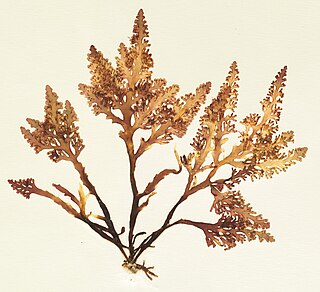
Osmundea pinnatifida is a species of red alga known by the common name pepper dulse.
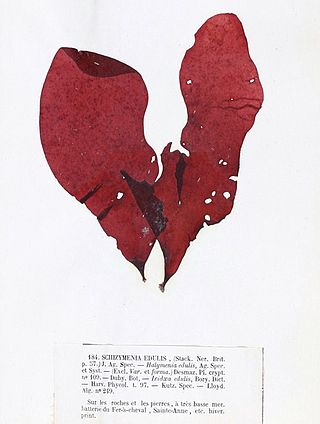
Dilsea carnosa, commonly known as the poor man's weather glass or the sea belt, is a species of red algae in the Dumontiaceae family of the order Gigartinales.
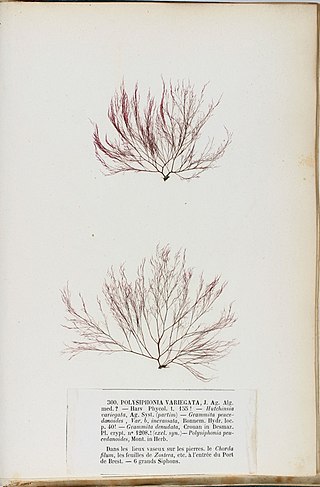
Polysiphonia denudata is a small red alga, Rhodophyta, growing as tufts up to 20 cm long without a main branch axis.
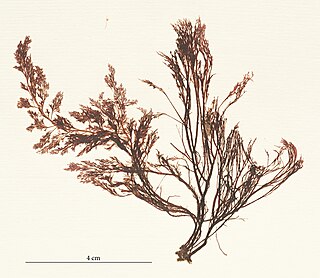
Polysiphonia elongata is a small red marine algae in the Rhodophyta.
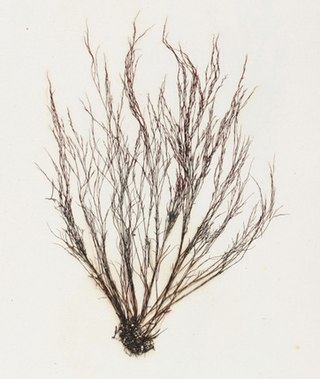
Polysiphonia nigra is a species of marine alga in the division Rhodophyta.
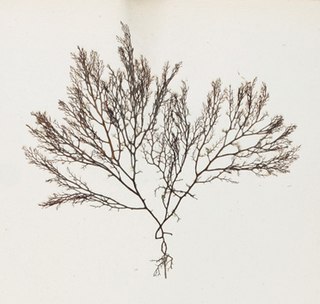
Vertebrata fruticulosa(Boergeseniella fruticulosa Kylin) is a small marine alga in the Division Rhodophyta.
Brongniartella byssoides Schmitz is a small red marine alga.
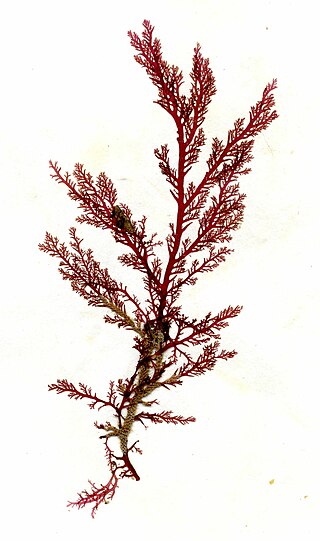
Plocamium cartilagineum is a medium-sized red marine alga.

Hypoglossum hypoglossoides, known as under tongue weed, is a small red marine alga in the family Delesseriaceae.

Delesseria sanguinea is a red marine seaweed.

Phycodrys rubens is a red marine alga of up to 30 cm long.
Phyllophora pseudoceranoides, the stalked leaf bearer, is a small marine red alga.
Phyllophora sicula, the hand leaf bearer, is a small red marine alga.
Phyllophora traillii is a small marine red alga.

Prasiola crispa is a small terrestrial green alga. It has been recorded world-wide mostly from cold-temperate to polar regions.
Prasiola furfuracea is a small green alga that grows terrestrially.
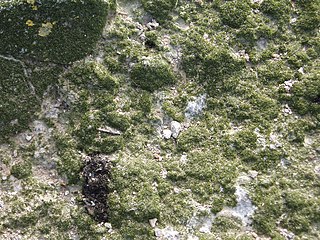
Prasiola stipitata is a small green alga of the family Praiolaceae. This species has been recorded in Iceland, the Faroe Islands, on the Atlantic coasts of North America and Europe as well as on the coasts of Australia and New Zealand. It inhabits cold temperature high-nutrient habitats.

Codium bursa is a green marine algae of medium size.
Phymatolithon lenormandii is a common red alga.














